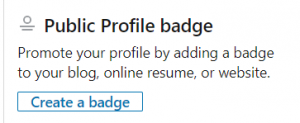Two bits of received wisdom echo around the world of marketing:
- It’s almost impossible to meaningfully differentiate commoditised products.
- In heavily regulated industries, you can’t be truly distinctive or creative.
But how true are they?
EXHIBIT 1: Apple

Among a vast swathe of the world’s population, a single glance at this logo will trigger a raft of emotions and perceptions. Indeed, so distinctive is Apple, it’s very easy to forget that it operates in the highly commoditised markets of PCs and smartphones, which are increasingly difficult to differentiate in terms of function.
EXHIBIT 2: This Guy

OK, you may not like this fellow. You may even hate him. But almost anyone in the UK will know who he is and the company he represents, even though Compare the Market operates in a sector that is both very tightly regulated and highly commoditised.
But let’s return to Apple for a moment…
As iPhone or Macbook owners would doubtless attest, Apple can still differentiate (to some extent) through its products. But in the face of relentless, cut-throat competition, sustaining the market share it has requires something else. That something else, the thing that really sets Apple apart, is its values.
Most of us would have some innate sense of the values Apple espouses: innovation, for instance, or obsession with design. But equally important is that even now, with the company worth in excess of $ 500bn, Apple still manages to convey an image of being an outsider, even counter-cultural.
The point here is not to suggest that everyone should slavishly copy Apple. The point is that in highly commoditised markets, companies can set themselves apart through values.
But in finance, it’s extremely tough to come up with unique values – after all, certain ideals would be embraced by practically all investment companies. Faced with this challenge, investment houses can instead set themselves apart in the way they convey their values.
This is why content marketing can be such a crucial tool for differentiating finance brands. Instead of telling your customers – through ads, marketing campaigns or product pushes – how trustworthy and insightful your company is, you can show them, through content that is incisive, targeted, even indispensable.
The bottom line is this: with content marketing, you don’t need to tell the world your values. You can show them.
(Full disclosure: Woodford, BNY Mellon Investment Management and Columbia Threadneedle are Copylab [my company] clients.)
VALUE 1:

For obvious reasons, every finance company wants to place this value at the centre of its identity. In terms of content marketing, a highly effective way to achieve this is with consistent use of that trusted staple, tone of voice.
When considering what might convey trustworthiness, traits such as openness, transparency and candour would come near the top of the list. And sure enough, many tone-of-voice documents at finance companies will profess precisely these values. The problem is, once these laboriously prepared tomes have been completed, they are often relegated to a dusty shelf in the marketing department, never to be seen again.
For tone-of-voice to work, it has to be authentic, the kind of tone people believe you’d use, to paraphrase Jeff Bezos, even when your customers aren’t in the room. Fortunately, content marketing provides an ideal way to achieve this, as these examples show:
Woodford

You don’t need to be privy to official information on Woodford’s tone of voice to know what it is; a look at the company’s content marketing and social media makes it very clear.
OUTSPOKEN: Through its blog and insights section, Woodford provides a series of timely and candid takes on current economic developments. While this is certainly not unique, Woodford’s writers frequently come from the most senior levels of the company, write in an accessible manner, and encourage and respond to questions. This allows each fund manager (frequently Neil Woodford himself) to become a real, fully rounded character with a distinct voice, lending credence to the idea that these are people you can trust.
ENGAGING: To see how engaging Woodford aims to be, look at its Christmas quiz. Of course, having a quiz at Christmas is no huge innovation, but Woodford’s team clearly goes to great lengths with theirs. It is fiendishly difficult, with pictorial questions that are both clever and practically Google-proof. It encourages (indeed, requires!) group effort, and Woodford releases teasers before and during the event, engaging with people that take part via Twitter. Woodford’s Twitter account is unusually (for a finance company) open, with prompt responses that are by turns insightful and witty. It’s no coincidence that the account has 25,000 followers.
PERSONABLE: Woodford’s profile is based on the fact that Neil Woodford is well known for his success as a fund manager. But rather than rest on this reputation, airily dispensing wisdom via viewpoints every quarter, Neil Woodford makes himself a visible and accessible presence, even appearing as a guest on Jazz.fm. Not only does this demonstrate Woodford’s adherence to openness, it also – crucially – sends a clear message to the entire company to embody these values, not just profess them.

M&G
Now, you might think, this is all very well for a company like Woodford, which has a relatively small number of staff and such a recognisable figure at its helm. But how does a big corporation implement a strong and authentic tone of voice?
Consider M&G. In its tone-of-voice document, the investment giant adopted the idea of being an “Independent Spirit”. To wit:
Our independent spirit is what sets us apart from other ‘heavyweight’ investors. We are not bound by a single ‘house’ fund management style which means we can afford to be bold in our statements.
Easily said, but not so easily done. However, with its Bond Vigilantes blog, M&G embodies its aim.

Yes, the posts are timely and expertly written by top managers on M&G’s fixed income team, and beautifully edited. Even more importantly, however, each writer has a distinct, outspoken voice, which can sometimes lead to differences of opinion. It is the “independent spirit” writ large.
VALUE 2:

As buzzwords in the world of finance marketing go, this is near the top of the list. Especially since the financial crisis, investment companies have been hugely keen to portray themselves as operating solely and effectively in the interests of their clients.
Their marketing content, however, can tell a different story.
Heavy on corporate-speak, product push and self-promotional commentaries, it’s little wonder that much material fails to engage customers. Content marketing, however, represents the ideal tool to create content that is focused and extremely valuable.
Wells Fargo

Directly addressing one of the single biggest issues families will ever have to face, Wells Fargo’s Student LoanDown offers reams of practical advice for students – and their parents – on the pitfalls and choices around going to university. The advice ranges from study tips to “8 tips for starting the college search” to, of course, all-important pointers on dealing with loans and finance. Combining such useful information with a very human face, Student LoanDown shows that Wells Fargo is a customer-centric company more effectively than any slogan could.
American Express OPEN Forum

Like Bond Vigilantes, OPEN Forum began almost 10 years ago, showing that however modish the term “content marketing” may be, the principles underlying it have been around – and powerful – for a long time.
OPEN Forum offers a huge range of useful, often indispensable, advice for small-business owners. With much of its content written not by American Express staffers, but by independent experts, OPEN Forum has genuine credibility and a distinctive voice.
This is not an altruistic exercise. American Express clearly wants to bring these small businesses on-board as customers, and figures that a good way to do that would be to help them make money. And what could be more customer-centric than that?
VALUE 3:

Whether it’s called expertise, judgement or thought leadership, insight is a value that all financial companies want to convey. As well they should: the sector sits on mountains of data, and employs some of the smartest people you could hope to meet.
For all that, frequently, these immensely clever people will produce content that is too dense, or insufficiently distinctive to cause much of a ripple beyond their immediate circle of investors. To show insight, rather than “tell” it, can require a punchier tone or some innovative presentation.
BNY Mellon
Over the last two years, BNY Mellon Investment Management has transformed its attitude to marketing. (See here for our interview with Anne-Marie McConnon, the company’s head of marketing EMEA.)

Recognising the need to create highly insightful content, BNY changed its writing team into a “newsroom”, employing experienced financial journalists to ensure output is timely, newsworthy, and keenly focused on what will interest readers. In close collaboration with fund managers, BNY has also created a blog based entirely on infographics, providing an accessible and shareable platform to disseminate its managers’ rich expertise.
Columbia Threadneedle

In a clear example of the great insight that investment companies can generate, Toby Nangle, a multi-asset fund manager at Columbia Threadneedle Investments, discovered something during the course of his work that was of interest not just to his clients, but to an array of top media outlets, too.
In a nutshell, Toby had built a position in a “War Loan” dating from World War I that, because the government retained an option to recall it at any time, offered a higher yield than comparable long-dated bonds. Through his own research, Toby figured out that by calling and refinancing the bond, the government could save the taxpayer £300m.
Toby then wrote a blog on the issue, encouraging the government to take action, which was subsequently picked up by the FT, and then The Guardian and Citywire, among others. By working closely with the corporate communications and content marketing teams, the original research undertaken by Toby, along with his personal investment in the issue, did much to distinguish both him and Columbia Threadneedle Investments as genuine thought leaders in their field.
KEY TAKEAWAYS
- In a highly commoditised market, values can be an enormously powerful way to differentiate a financial brand – IF they are shown, not just told. Produce content that shows your company is trustworthy, customer-centric and insightful – and not just looking to sell – and customers are more likely to believe you.
- In crystallising these values, a tone-of-voice document can be a very persuasive tool. In order for it to work, however, it must be embraced and endorsed by the highest levels of the company.
(104)
Report Post






